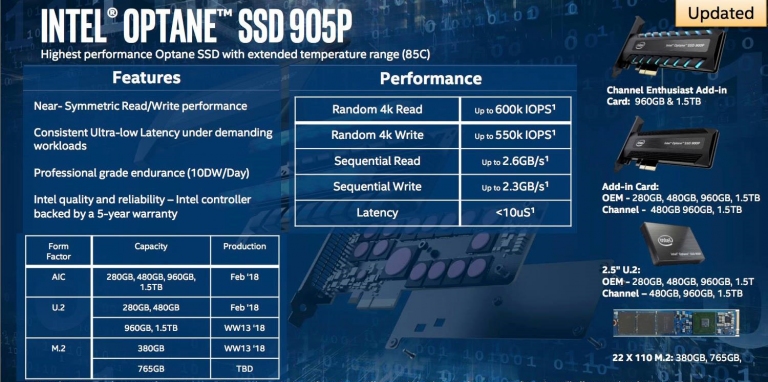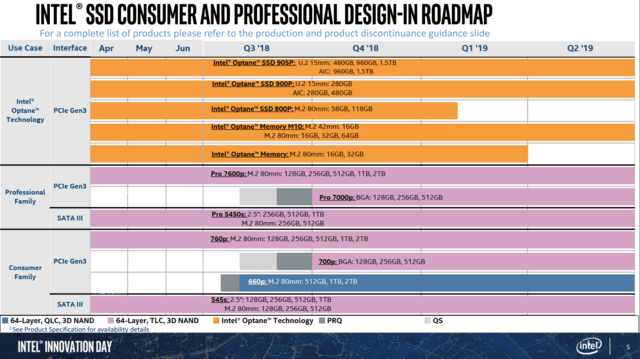Furthermore, if comparing the Intel 660p SSD to 118GB Optane SSD the Sequential Read is actually faster on the NAND SSD . So caching larger files on the small Optane drive would reduce performance in at least two ways:
The Optane products are too high priced to justify just speeding up in one metric. The advantages shown might be even less than today, because performance is much more than just random 4K QD1.
Also,
The 660p is rated at 1.5/1GB/s on the 512GB model for sequential throughput, its random read/write(not 4K) is rated at 90K/220K, which corresponds to 360MB/880MB.
In contrast, out of the 1.45GB/640MB sequential for 800P, the random read/write is rated at 250K/145K, or 1GB/580MB, which is very close to the sequential peak.
So Optane can reach peak rated much more often than NAND drives even in areas outside the random 4K.
https://www.anandtech.com/show/13078/the-intel-ssd-660p-ssd-review-qlc-nand-arrives/6
https://www.anandtech.com/show/12512/the-intel-optane-ssd-800p-review/6
You can see how even with 128KB sequential throughput how the 660p plummets when the drive is full. So even if the 800P is disadvantaged on paper, in reality it'll be able to achieve that all the time while 660p will be massively fluctuating. So it can speed up the 660p in all areas.
But what you really want is bypass all the software and firmware limitations and go straight for using a hardware solution. A single 3D XPoint chip in place of the DRAM buffers used in NAND SSDs and hybrid HDDs.
Even having computer knowledge doesnt make practical sense. It looks like for switching drive all cache woulde be deleted. So if I switch to another drive then have to use the programs in that drive few times to train the memory.
How many of us switch drives? I think you are asking a niche within a niche. Or are you just being a flamebait?





